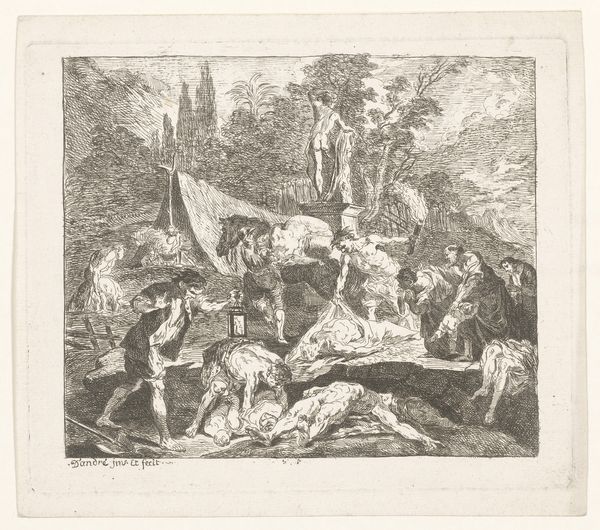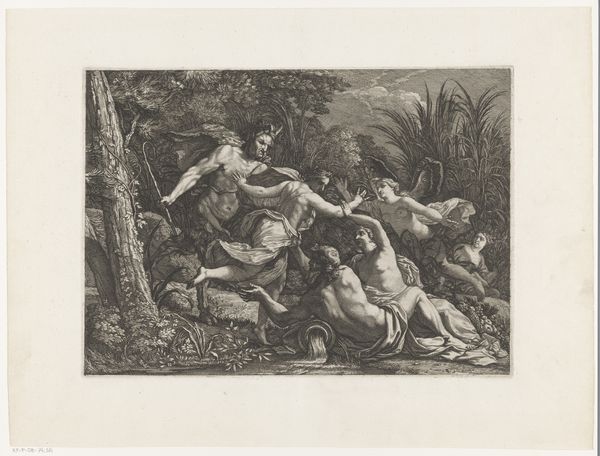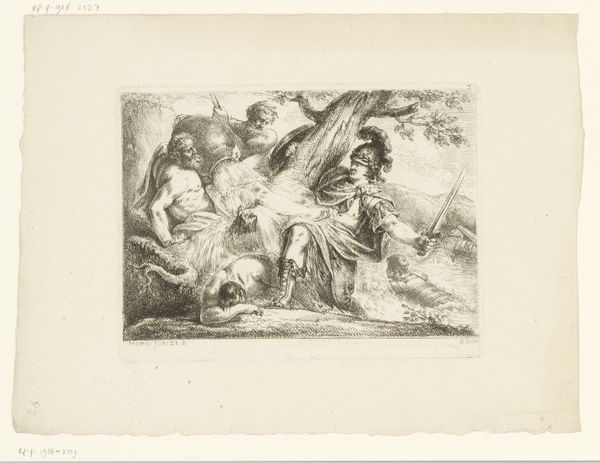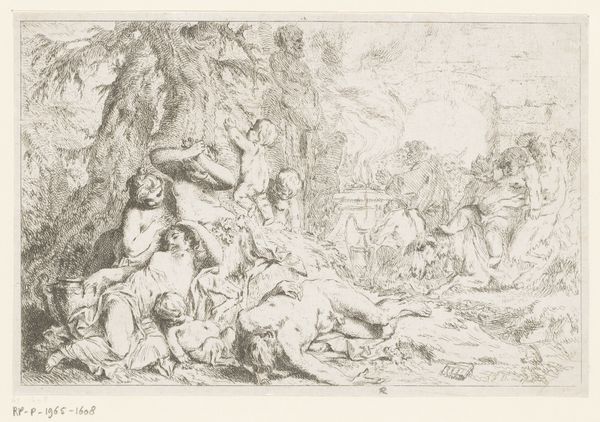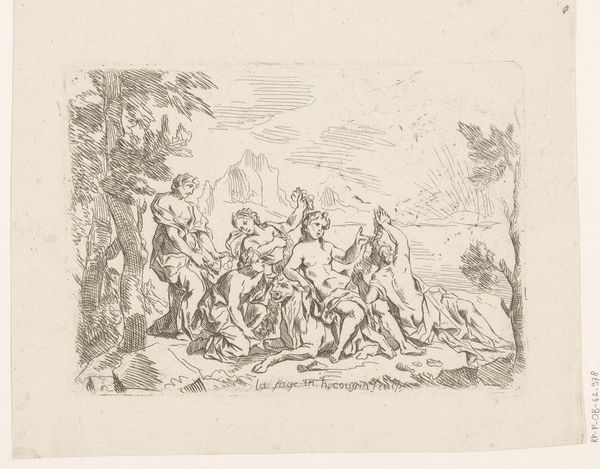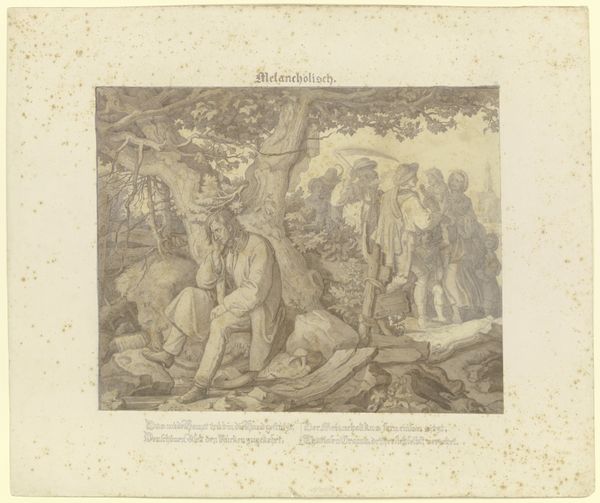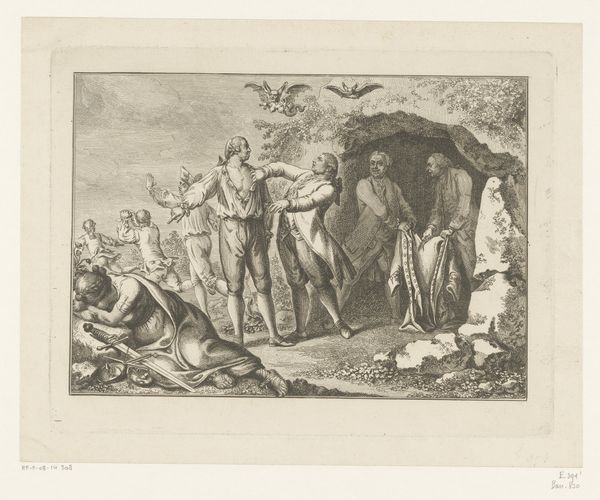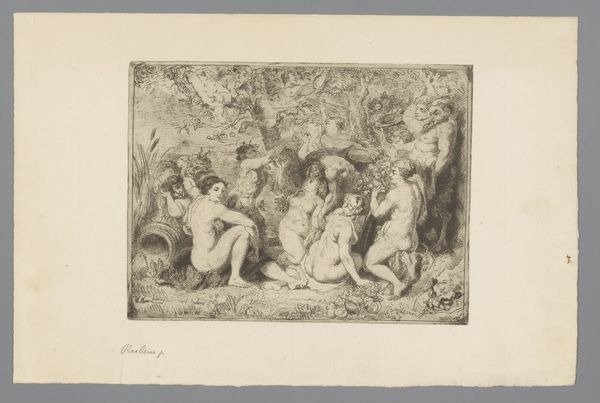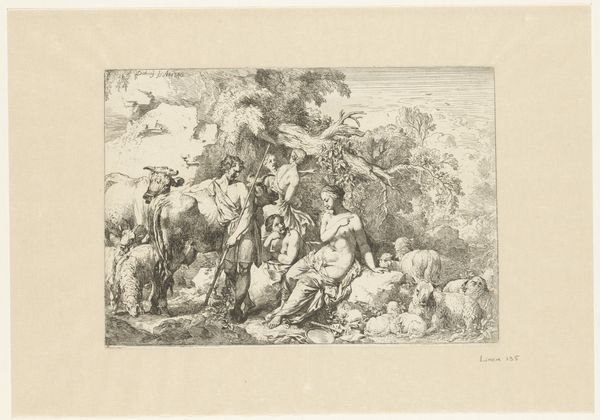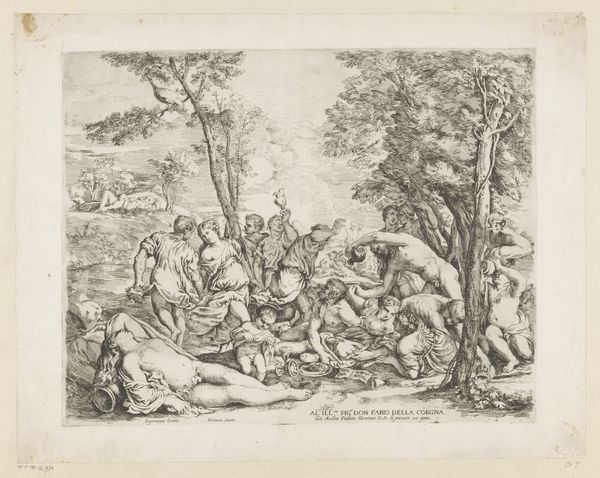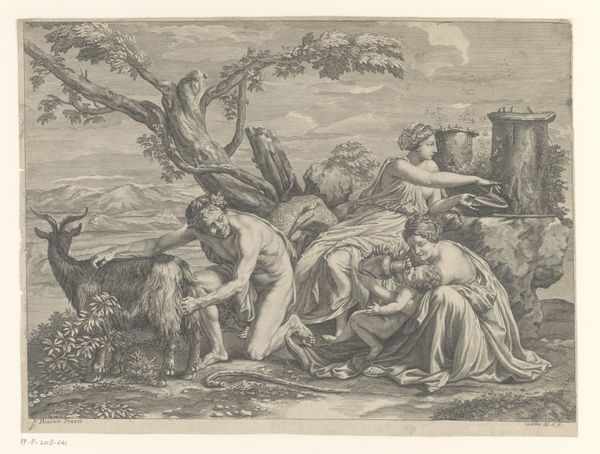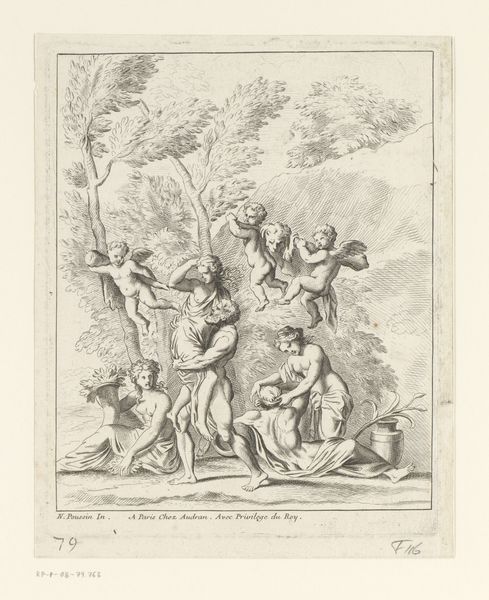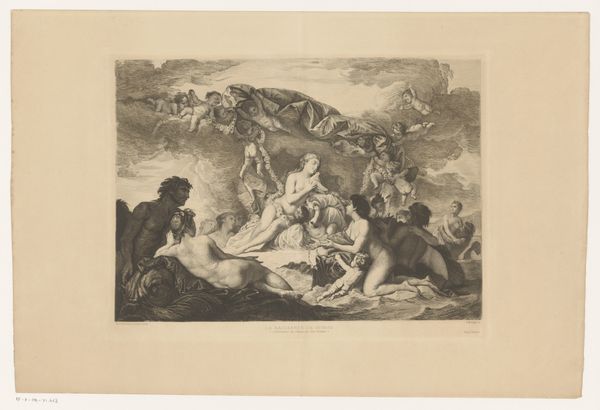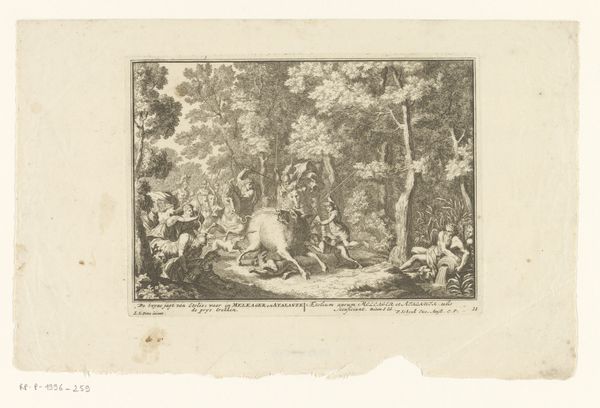
etching, engraving
#
baroque
#
etching
#
landscape
#
etching
#
figuration
#
history-painting
#
sketchbook art
#
engraving
Dimensions: height 245 mm, width 327 mm
Copyright: Rijks Museum: Open Domain
Curator: Editor: So, here we have "Apollo and the Muses," an etching or engraving made between 1697 and 1712. The depiction of these figures feels really precise. How do you read a piece like this? Curator: I'm immediately drawn to the socio-economic conditions that enabled the production of this etching. Who was consuming prints like this? These weren't mass-produced in the way we think of prints today. This work shows me that the act of engraving—the labor and materials involved—shaped the consumption of this particular imagery. How does that strike you? Editor: Well, knowing it wasn't mass-produced gives the image an almost craft-like quality. The time and skill poured into this image…it was a precious commodity. Curator: Precisely! Consider the paper, the inks, the press itself – and of course, the engraver’s time. Were these materials locally sourced? Were there trade routes at play? How would access to specific materials influence the type and quality of works produced in a certain location or time? Also, how does it being an etching/engraving shift the social perspective from an oil painting for example? Editor: So, the deliberate choice of this medium makes it more accessible? Perhaps broadening the scope of who could possess a depiction of Apollo. Curator: Indeed! Prints acted as a vital mechanism of distribution and therefore impacted their meaning. By understanding the physical realities and access to labor, we gain insight into how power dynamics influence both artistic creation and reception. What is something that stuck with you through our conversation? Editor: I guess that analyzing the materials can open a window to an artwork’s function in society, and the way audiences interact with it! Thanks. Curator: A great thought to end with.
Comments
No comments
Be the first to comment and join the conversation on the ultimate creative platform.
